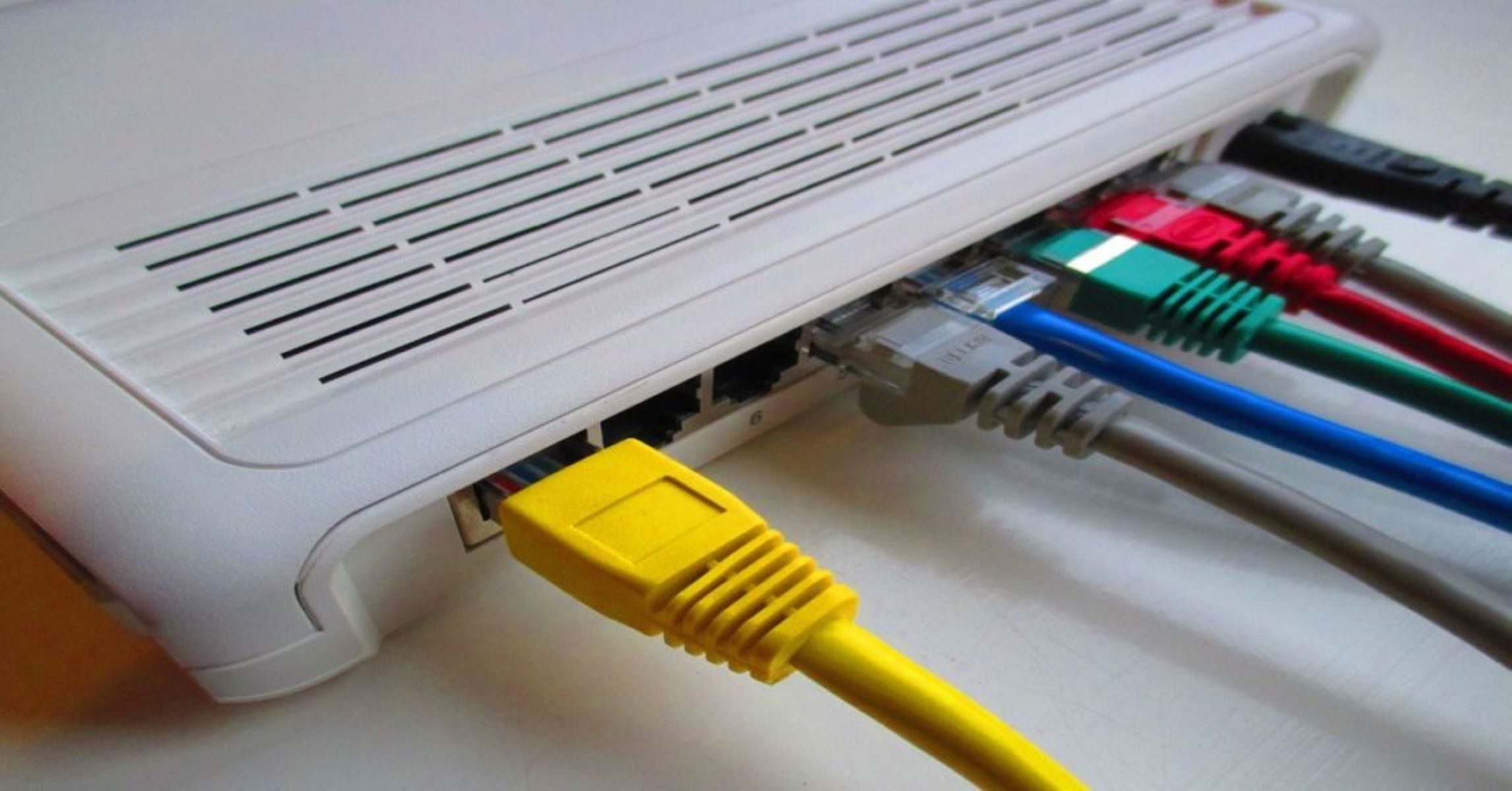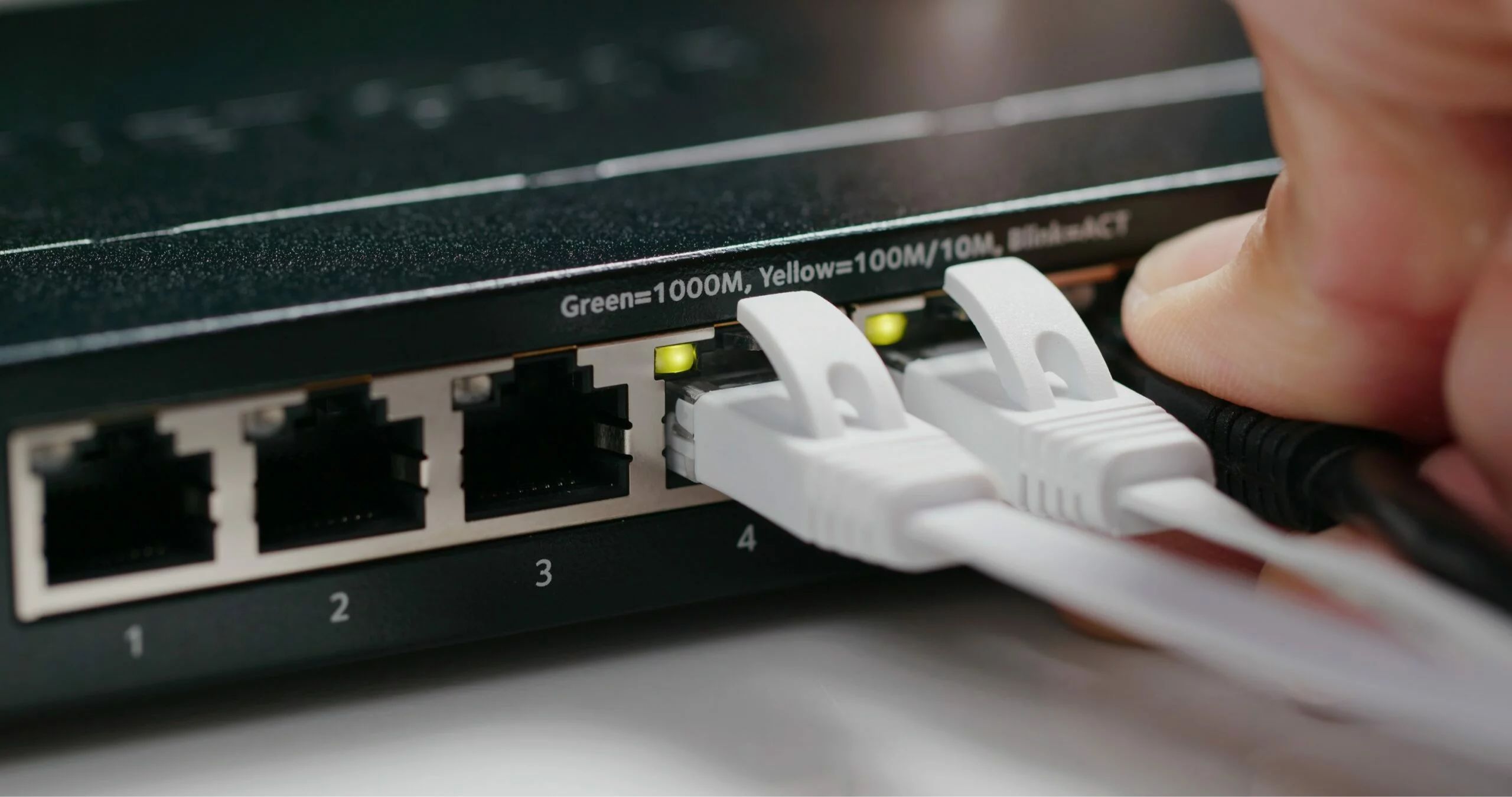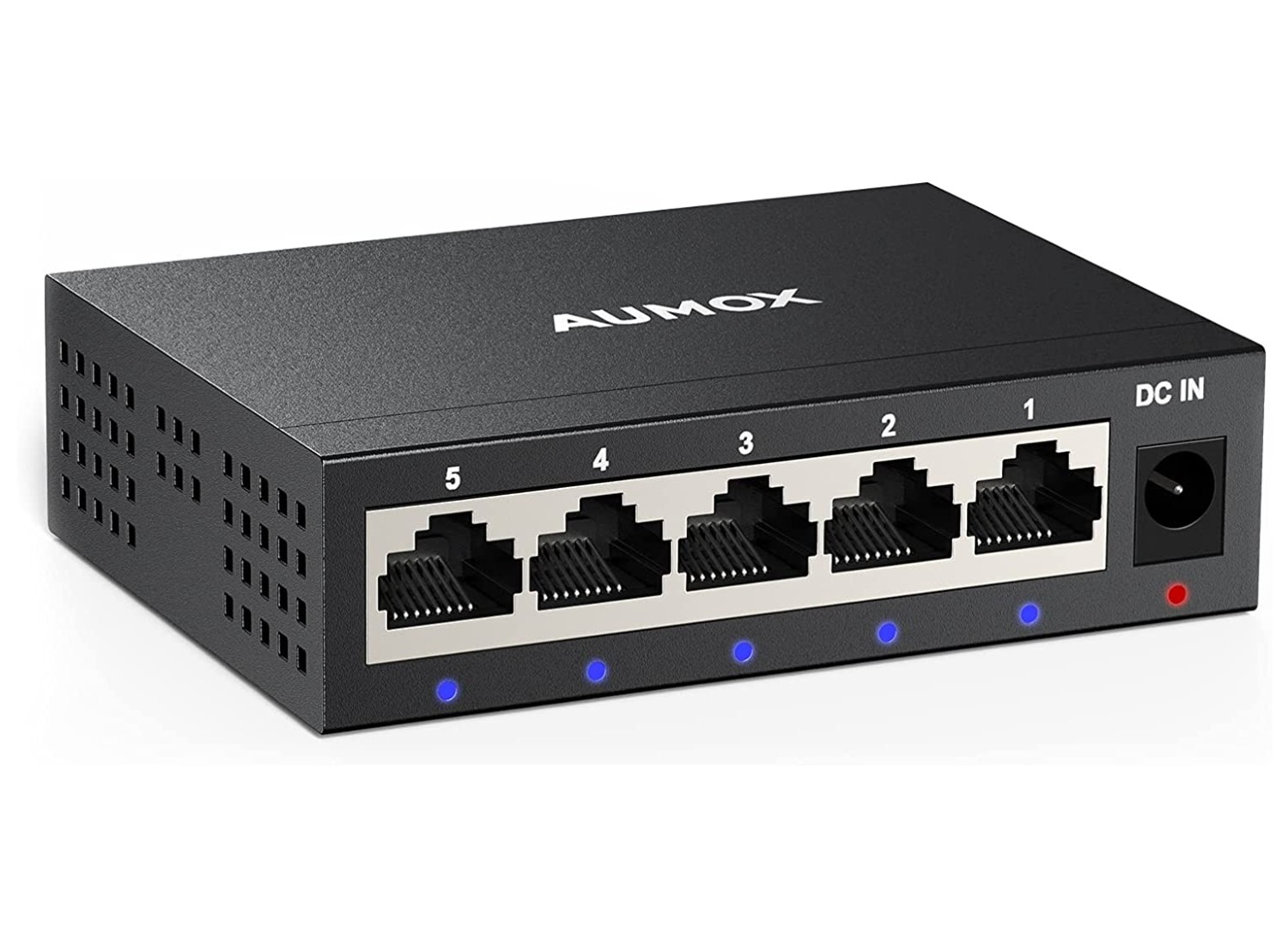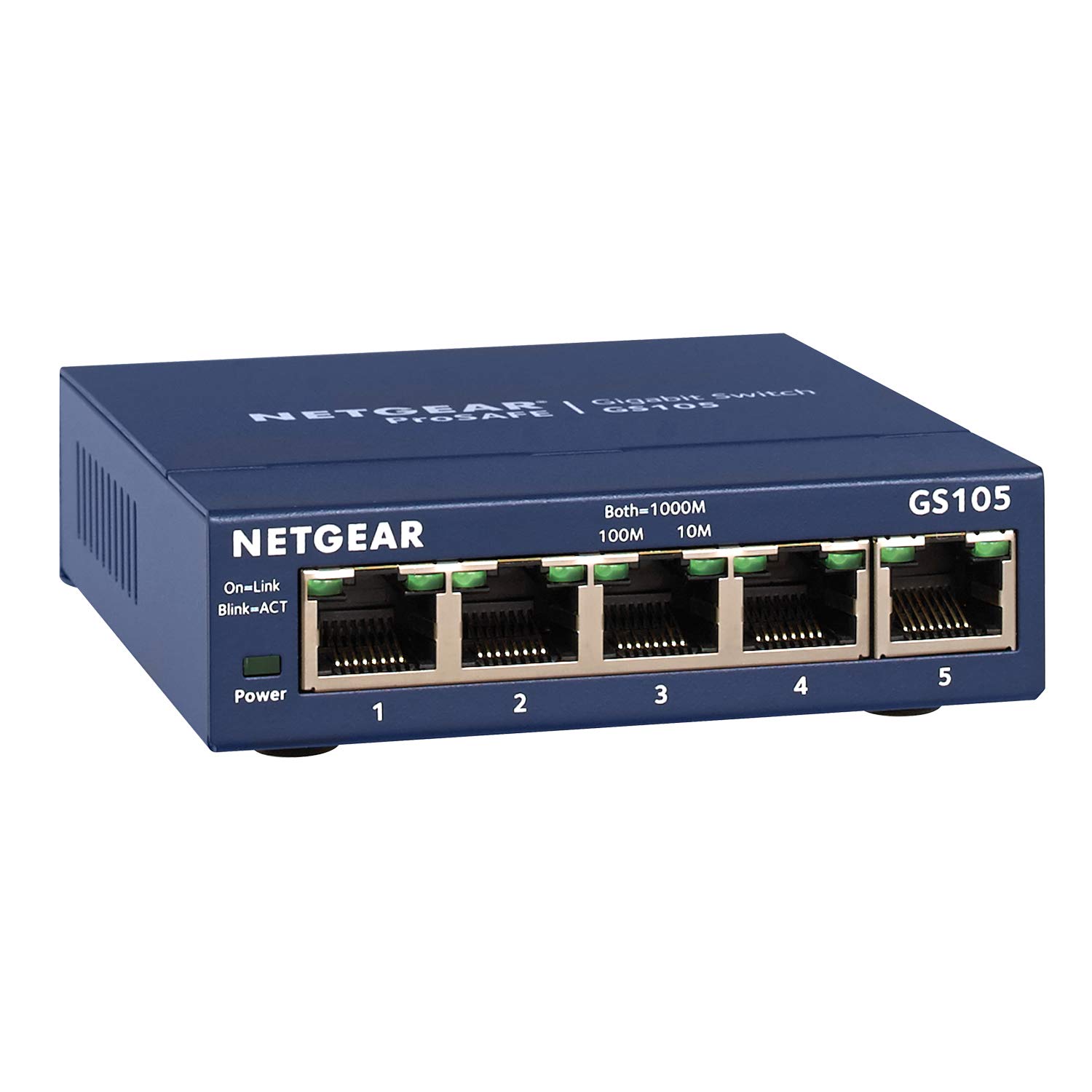Introduction
Considering the vast expansion of digital networking and communication technologies, understanding the intricacies of Ethernet II frames and VLANs plays a vital role in optimizing network performance. Ethernet II frames serve as the foundation of data transmission, enabling the exchange of information across various devices within a network. Meanwhile, VLANs (Virtual Local Area Networks) allow for the segmentation of a network into multiple virtual networks, enhancing security, efficiency, and scalability.
One significant aspect of Ethernet II frames on VLANs is the maximum frame size. It refers to the largest amount of data that can be encapsulated within a single frame and efficiently transmitted across a VLAN. The maximum frame size has a substantial impact on network performance, as it affects factors such as throughput, latency, and overall efficiency.
In this article, we will delve into the concept of Ethernet II frames on VLANs and explore the factors that determine the maximum frame size for efficient data transmission. We will also examine the benefits and drawbacks of using the maximum frame size and provide insights on how to determine the maximum frame size on a VLAN.
By the end of this article, readers will have a comprehensive understanding of the maximum frame size for Ethernet II frames on VLANs and how it influences network performance. Let us now explore the intricate world of Ethernet II frames and VLANs.
What is Ethernet II Frame?
The Ethernet II frame, also known as the Ethernet DIX frame, is a widely used data-link layer protocol for sending and receiving data over a local area network (LAN) or wide area network (WAN). It is the most common and widely supported Ethernet type and is used in a variety of network devices, including computers, switches, routers, and servers.
The Ethernet II frame consists of several essential components that enable the seamless transmission of data. These components include the preamble, destination MAC address, source MAC address, EtherType field, data payload, and the frame check sequence. Let’s take a closer look at each of these components:
- Preamble: The preamble is a sequence of alternating 1s and 0s that serves as a synchronization signal. It helps the receiving device synchronize its clock with the sender’s clock, allowing for accurate data transmission.
- Destination MAC address: The destination MAC address specifies the network interface card (NIC) or device that should receive the frame. It is a unique identifier assigned to each network device.
- Source MAC address: The source MAC address indicates the NIC or device from which the frame originates. Like the destination MAC address, it is a unique identifier associated with the device sending the frame.
- EtherType field: The EtherType field identifies the type of data within the frame. It informs the receiving device about the protocol to which the data is associated, such as IP (Internet Protocol), ARP (Address Resolution Protocol), or VLAN tagging.
- Data payload: The data payload contains the actual data being transmitted, such as an IP packet or a segment of a higher-layer protocol.
- Frame check sequence: The frame check sequence is a 32-bit cyclic redundancy check (CRC) value used to ensure the integrity of the frame during transmission. The receiving device uses this value to verify whether the frame has been corrupted or modified during transit.
The Ethernet II frame format allows for efficient and reliable communication across Ethernet networks. Its standardized structure ensures compatibility and interoperability between different devices and simplifies the process of transmitting and receiving data packets. When combined with VLANs, Ethernet II frames create a powerful platform for secure and scalable network infrastructures.
What is VLAN?
A VLAN, which stands for Virtual Local Area Network, is a method of logically segmenting a physical network into multiple virtual networks. It enables network administrators to group devices together, regardless of their physical location, and provides a range of benefits in terms of security, efficiency, and flexibility.
Traditionally, LANs are based on physical connections, where devices within the same physical network can communicate with each other. However, with VLANs, devices can be grouped together into virtual LANs, even if they are physically located in different areas or connected to separate network switches.
VLANs operate by assigning a unique identifier, known as a VLAN ID or VLAN tag, to each group of devices. These VLAN tags are inserted into the Ethernet frames as they traverse the network, allowing network switches and routers to identify which VLAN a particular frame belongs to and handle it accordingly.
There are several key benefits that VLANs bring to network environments:
- Enhanced Security: VLANs provide enhanced security by isolating traffic between different groups of devices. By segmenting the network into virtual LANs, administrators can control access and restrict communication between devices within and across VLANs, improving overall network security.
- Improved Network Performance: VLANs help optimize network performance by reducing broadcast traffic and isolating traffic to specific groups of devices. By separating devices into different VLANs, administrators can minimize unnecessary network congestion and improve overall efficiency.
- Flexible Network Management: VLANs enable network administrators to easily manage and reconfigure network resources as needed. Devices can be added, removed, or moved between VLANs without physically rewiring the network, allowing for greater flexibility and scalability.
- Logical Grouping of Devices: VLANs allow for the logical grouping of devices based on specific criteria, such as departments, teams, or functional areas. This makes it easier to manage access control, apply policies, and streamline network administration tasks.
VLANs have become an essential tool for network administrators, providing a scalable and secure approach to network segmentation. Whether it is isolating sensitive data, optimizing network performance, or simplifying network management, VLANs offer a flexible solution for building efficient and reliable network infrastructures.
Maximum Frame Size for Ethernet II Frames
The maximum frame size for Ethernet II frames refers to the largest amount of data that can be encapsulated within a single frame and transmitted across a VLAN. This size is determined by the Ethernet protocol and is crucial for optimizing network performance and efficiency.
In most Ethernet networks, the maximum frame size is set at 1500 bytes, which includes the data payload, Ethernet header, and trailer. However, it is important to note that VLAN tagging adds an additional 4 bytes to the frame, increasing the overall frame size to 1504 bytes.
The maximum frame size is primarily dictated by the MAC (Media Access Control) layer of the Ethernet protocol. It is important to adhere to this maximum frame size to ensure compatibility and efficient data transmission across the network.
When the maximum frame size is exceeded, a process known as frame fragmentation occurs. Frame fragmentation involves breaking down the data into smaller fragments that can fit within the maximum frame size. These fragments are then transmitted individually and reassembled at the receiving end. While fragmentation allows for larger data transfers, it can introduce delays and reduce network efficiency.
It is worth noting that different Ethernet standards may have different maximum frame sizes. For example, Ethernet over Fast Ethernet (100 Mbps) and Gigabit Ethernet (1 Gbps) networks usually support the standard 1500-byte frame size. However, newer Ethernet technologies such as 10 Gigabit Ethernet (10 Gbps) and 40 Gigabit Ethernet (40 Gbps) may support Jumbo Frames, which have a maximum frame size of up to 9000 bytes.
The choice of maximum frame size depends on various factors, including network infrastructure, bandwidth requirements, and the types of data being transmitted. It is crucial to ensure that the chosen maximum frame size is supported by all devices within the network to avoid compatibility issues.
Overall, understanding and adhering to the maximum frame size for Ethernet II frames on a VLAN is essential for optimizing network performance, reducing fragmentation, and ensuring efficient data transmission across the network.
Factors Affecting Maximum Frame Size
The maximum frame size for Ethernet II frames can be influenced by several factors. These factors determine the optimal frame size that ensures efficient data transmission while maintaining compatibility with network devices and protocols. Let’s explore the key factors that affect the maximum frame size:
- Network Technology: Different network technologies have different maximum frame size limitations. For example, traditional Ethernet networks usually have a maximum frame size of 1500 bytes, while newer technologies like Jumbo Frames can support larger frame sizes, often up to 9000 bytes.
- Network Devices: The maximum frame size can also be influenced by the capabilities of network devices such as switches, routers, and network interface cards (NICs). All devices within the network need to support the chosen maximum frame size to ensure seamless data transmission.
- MTU (Maximum Transmission Unit): The Maximum Transmission Unit is the largest packet size that can be transmitted over a network without fragmentation. The MTU value is closely related to the maximum frame size, as the frame size should be equal to or smaller than the MTU to prevent fragmentation. Network administrators need to consider the MTU of their network infrastructure when determining the maximum frame size.
- Data Overhead: The inclusion of additional headers, footers, and control information within the frame adds overhead to the transmitted data. This overhead may reduce the usable space within the frame for the actual data payload, resulting in a smaller maximum frame size.
- Network Efficiency: Larger frame sizes can help improve network efficiency by reducing the number of frames required to transmit a given amount of data. However, larger frame sizes can also lead to longer transmission times and increased latency, which may impact real-time applications or networks with strict timing requirements.
- Network Congestion: In highly congested networks, smaller frame sizes may be preferred to reduce collisions and improve overall network performance. Smaller frames have shorter transmission times, allowing for faster data transmission and reducing the likelihood of collisions.
Considering these factors, network administrators must strike a balance between maximizing frame size for efficient data transmission and accommodating the limitations and requirements of the network infrastructure and devices. By carefully evaluating these factors, administrators can determine the optimal maximum frame size that ensures optimal network performance and compatibility.
Benefits of Using Maximum Frame Size
Using the maximum frame size for Ethernet II frames on a VLAN offers several benefits that contribute to enhanced network performance and efficiency. Let’s explore the key advantages of using the maximum frame size:
- Improved Throughput: Larger frame sizes allow for more data to be transmitted in a single frame, reducing the overhead associated with frame headers and control information. This results in improved throughput and faster data transfer rates across the network.
- Reduced Overhead: Increasing the frame size reduces the proportion of overhead relative to the actual data payload. This means that a larger percentage of each frame is dedicated to carrying useful data, resulting in more efficient use of network resources.
- Decreased CPU Overhead: Transmitting larger frame sizes reduces the burden on network devices’ CPUs as they need to process fewer frames per unit of data transmitted. This can lead to improved overall network performance and smoother operation of network devices.
- Increased Efficiency: Using the maximum frame size helps reduce the number of frames required to transmit a given amount of data. This reduction in frame count minimizes the potential for collisions, resulting in improved network efficiency and reduced network congestion.
- Optimized Bandwidth Utilization: With larger frame sizes, the overhead associated with transmitting data is spread across a greater amount of actual data. This efficient utilization of available bandwidth results in better overall bandwidth utilization across the network.
- Enhanced Performance for Large File Transfers: The maximum frame size is particularly beneficial for transmitting large files or data-intensive applications. By allowing more data to be transmitted in each frame, large file transfers can be completed more quickly, reducing network latency and improving overall performance.
Overall, using the maximum frame size for Ethernet II frames on a VLAN brings significant advantages to network performance and efficiency. It allows for improved throughput, reduced overhead, decreased CPU burden, increased efficiency, optimized bandwidth utilization, and enhanced performance for large file transfers. By carefully considering these benefits, network administrators can make informed decisions regarding frame size, maximizing the potential of their network infrastructure.
Disadvantages of Using Maximum Frame Size
While using the maximum frame size for Ethernet II frames on a VLAN offers numerous benefits, there are also some disadvantages that need to be considered. It is important for network administrators to be aware of these drawbacks when determining the optimal frame size for their networks:
- Increased Latency: Larger frame sizes can result in increased latency, as it takes longer to transmit a larger amount of data within a frame. This latency may be noticeable in real-time applications or networks that require rapid data transmission.
- Higher probability of Frame Loss: With larger frame sizes, the probability of frame loss due to errors or collisions increases. Since larger frames take longer to transmit, they are more susceptible to interference or collisions, potentially leading to retransmissions and reduced overall network performance.
- Compatibility Issues: Some network devices, particularly older or less advanced ones, may not support the maximum frame size. This can cause compatibility issues and prevent smooth communication between different devices within the network. It is crucial to ensure that all network devices are capable of handling the chosen maximum frame size.
- Fragmentation Overhead: If the maximum frame size is exceeded, frames need to be fragmented into smaller pieces to fit the network infrastructure’s constraints. This fragmentation process adds overhead and can impact network performance, especially if frequent frame fragmentation occurs.
- Higher Memory Consumption: Transmitting larger frame sizes requires memory resources in network devices. For devices with limited memory capacity, using the maximum frame size may result in increased memory consumption and potentially impact device performance.
- Limited Reach: Some network technologies or network segments may have limitations on the maximum frame size. For example, certain Wide Area Network (WAN) technologies and older Ethernet standards may have restrictions on the frame size, limiting the reach of larger frames.
While the disadvantages of using the maximum frame size are worth considering, they can be mitigated with proper network design, hardware selection, and performance optimization measures. Network administrators must carefully weigh these drawbacks against the benefits to determine the most suitable frame size for their specific network requirements and infrastructure.
How to Determine Maximum Frame Size on a VLAN
To determine the maximum frame size for Ethernet II frames on a VLAN, network administrators need to consider various factors and follow specific steps. By following these steps, administrators can ensure that the frame size is optimized for network performance and compatibility:
- Understand Network Infrastructure: Begin by familiarizing yourself with the existing network infrastructure, including the types of network devices, switches, routers, and network interface cards (NICs) that are being used. Check for any limitations or specifications related to frame size, including MTU settings and supported Ethernet standards.
- Review Network Device Specifications: Examine the specifications of the network devices being used in the VLAN. Look for information related to the supported maximum frame size or jumbo frame capabilities. Ensure that all devices within the VLAN support the desired maximum frame size.
- Consider the Network Technology: Determine the network technology being used, such as Fast Ethernet, Gigabit Ethernet, 10 Gigabit Ethernet, or others. Different network technologies may have different maximum frame size limitations. Take note of any specific considerations or limitations when it comes to the network technology being implemented.
- Assess Network Requirements: Evaluate the specific requirements of the network, including the types of data being transmitted, the anticipated volume of traffic, and the applications running on the network. Consider factors such as latency, throughput, and the need for real-time or high-bandwidth applications.
- Weigh Benefits and Drawbacks: Analyze the benefits and disadvantages of using the maximum frame size for the VLAN. Consider the trade-offs between improved throughput, reduced overhead, and potential issues such as increased latency or frame loss. Determine if the benefits outstrip the drawbacks in the context of the specific network environment.
- Conduct Testing and Performance Evaluation: Perform testing and evaluation on the network with different frame sizes to assess performance, latency, and overall network efficiency. Use tools and monitoring software to measure network performance metrics and determine the impact of different frame sizes on the network’s overall performance.
- Make Informed Decision: Based on the analysis, testing, and evaluation, make an informed decision on the maximum frame size that best suits the specific network requirements and environment. Ensure that the chosen frame size is supported by all network devices in the VLAN, and consider any potential compatibility or interoperability issues.
By following these steps, network administrators can determine the maximum frame size for Ethernet II frames on a VLAN that aligns with the network infrastructure, requirements, and performance expectations. It is essential to regularly review and reassess the frame size as the network evolves and new technologies emerge.
Conclusion
Understanding the maximum frame size for Ethernet II frames on a VLAN is crucial for optimizing network performance, efficiency, and compatibility. By examining the components of Ethernet II frames, the concept of VLANs, and the factors that affect the maximum frame size, network administrators can make informed decisions to enhance their network infrastructures.
Throughout this article, we have explored the benefits of using the maximum frame size, such as improved throughput, reduced overhead, and optimized bandwidth utilization. It allows for efficient data transmission, enhanced network performance, and logical grouping of devices within a VLAN.
However, it is important to acknowledge the potential disadvantages of using the maximum frame size, including increased latency, higher frame loss probability, and compatibility issues with certain network devices. Network administrators must carefully consider these drawbacks and strike a balance between maximizing frame size and ensuring effective network performance.
To determine the maximum frame size on a VLAN, administrators need to understand the network infrastructure, review device specifications, assess network requirements, and conduct testing and performance evaluations. By following these steps, administrators can make informed decisions that align with the network environment and optimize network performance.
In conclusion, the maximum frame size for Ethernet II frames on a VLAN is a critical aspect of network optimization. By carefully considering the benefits and drawbacks, evaluating network requirements, and testing performance, network administrators can determine the optimal frame size that enhances efficiency, minimizes latency, and ensures compatibility with network devices. This enables a seamless and productive networking experience, contributing to the overall success of the network infrastructure.

























